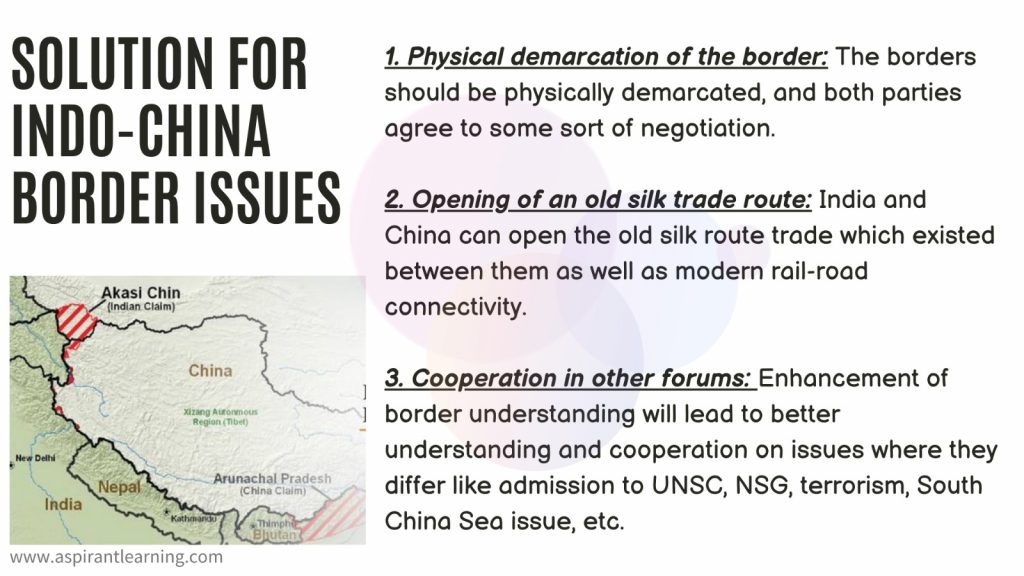News Highlights:
- India has summarily rejected China’s attempt to lay claim over areas of Arunachal Pradesh after it issued new official names for them.
- The Ministry of External Affairs stated that “invented names” will not alter the reality that Arunachal Pradesh is an integral part of India.
Key takeaway:
The Chinese Ministry of Civil Affairs said it would “standardise” 11 place names in what China calls “South Tibet or Zangnan”, an area consistently controlled by India.
Importance of Arunachal Pradesh:
- Strategic Significance:
- Arunachal Pradesh, known as the Northeast Frontier Agency (NEFA) until 1972, is the largest state in the northeast and shares international borders with Tibet to the north and northwest, Bhutan towards the west and Myanmar to the east.
- The state is like a protective shield to the northeast.
- However, China claims Arunachal Pradesh as a part of southern Tibet.
- And while China may claim the entire state, its main interest lies in the district of Tawang, which is in the north-western region of Arunachal and borders Bhutan and Tibet.
- Bhutan Factor:
- Taking control of Arunachal would mean that Bhutan would have Chinese neighbours on both its western and eastern borders of Beijing gained control.
- On the western side of Bhutan, China has already begun building motorable roads linking strategic points.
- Waterpower:
- Since China controls India’s water supply to the northeastern region. It has constructed several dams and can use water as a geo-strategic weapon against India by causing flooding or drought in the region.
- The Tsangpo River originates in Tibet and flows into India and is called Siang in Arunachal Pradesh before it becomes the Brahmaputra.
- In 2000, a dam breach in Tibet caused floods that wreaked havoc in northeast India claiming 30 lives and leaving more than 100 missing.
China Interested in the Tawang Sector:
- Strategic Importance:
- China’s interest in Tawang could be for tactical reasons, as it provides a strategic entry into India’s northeastern region.
- Tawang is a critical point in the Tibet and Brahmaputra Valley corridor.
- Tawang Monastery:
- Tawang, which also borders Bhutan, hosts the Galden Namgey Lhatse, the world’s second-largest monastery of Tibetan Buddhism, the largest being the Potala Palace in Lhasa.
- Merag Lodroe Gyamtso founded the monastery in 1680-81 to honour the wishes of the fifth Dalai Lama.
- China claims that the monastery is evidence that the district once belonged to Tibet. They cite historical ties between the Tawang and Lhasa monasteries in Tibet to support their claim over Arunachal.
- Cultural Connections and China’s Anxieties:
- Tawang is an important centre of Tibetan Buddhism, and there are some tribes in the upper Arunachal region which have cultural connections to the people of Tibet.
- The Monpa tribal population practices Tibetan Buddhism and are also found in some areas of Tibet.
- According to some experts, China fears that the presence of these ethnic groups in Arunachal could, at some stage, give rise to a pro-democracy Tibetan movement against Beijing.
- Political Significance:
- When the Dalai Lama escaped Tibet in 1959 amid China’s crackdown, he entered India through Tawang and stayed in the Tawang monastery for some time.

Recent Steps Taken by India:
- Border development projects:
- India will spend 10% funds of the Border Area Development Programme (BADP) only to improve the infrastructure along the China border.
- The Border Roads Organisation (BRO) constructed the Daporijo bridge over the Subansiri River in Arunachal Pradesh in a record span of just 27 days.
- It links roads leading up to the LAC between India and China.
- Recently, the Defence Minister virtually laid the foundation of a tunnel at Nechiphu in the West Kameng district of Arunachal Pradesh.
- It will shorten travel time for troops till the LAC through Tawang, which China claims to be its territory.
- The BRO is already constructing an all-weather tunnel under the Se La Pass in Arunachal Pradesh which connects Tawang to the rest of Arunachal and Guwahati.
- Census towns in Border Areas:
- Several instances of intrusion by people from Tibet across the McMahon Line into districts of Arunachal Pradesh bordering China have been reported.
- Following the intrusion, depopulation in border villages of Arunachal Pradesh has been observed. It is considered a security threat, as it is easier for foreign armies to occupy vacant villages.
- The state government of Arunachal Pradesh has advocated the selection of 10 census towns along the India-China border as pilot projects for infrastructure development to stop people living along its international borders, specifically with China, from migrating to faraway urban centres in the State.
Way Forward:
- India must be vigilant enough for any new development in China near its border to protect its interests efficiently.
- Further, it needs to build robust Infrastructure in difficult border areas in its territory to efficiently ensure the movement of personnel and other logistical supplies.
- Border troops should continue their dialogue, quickly disengage, maintain proper distance and ease tensions.
Pic Courtesy: Wiki media commons
Content Source: The Hindu



